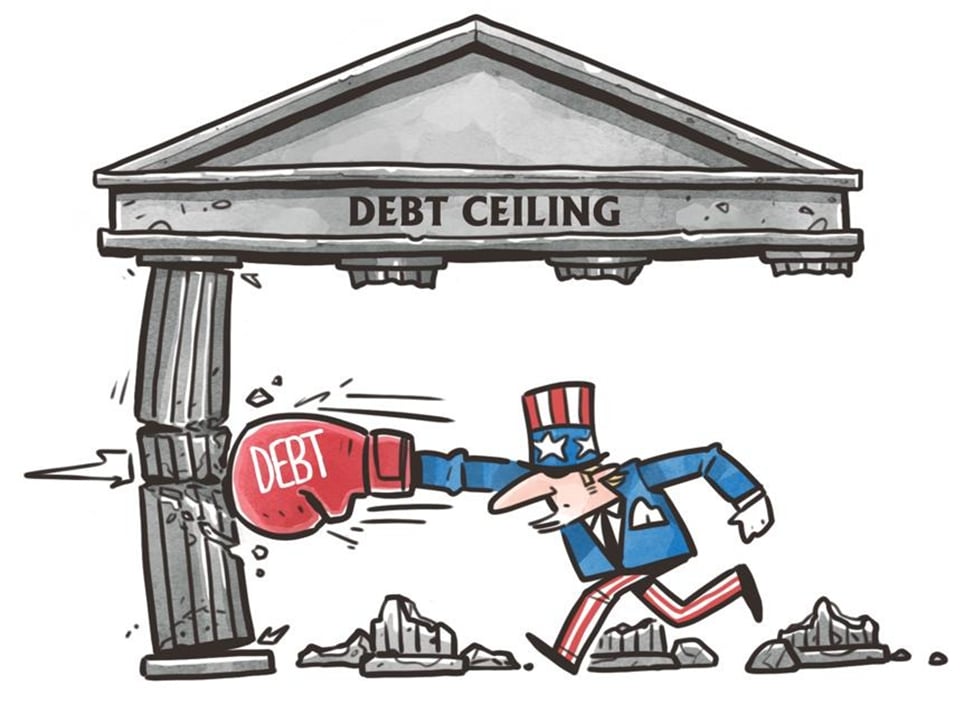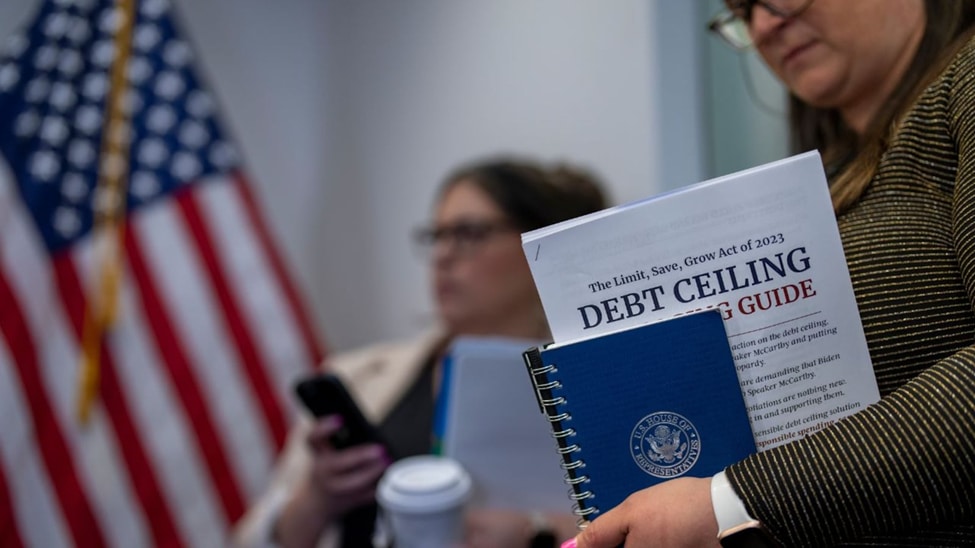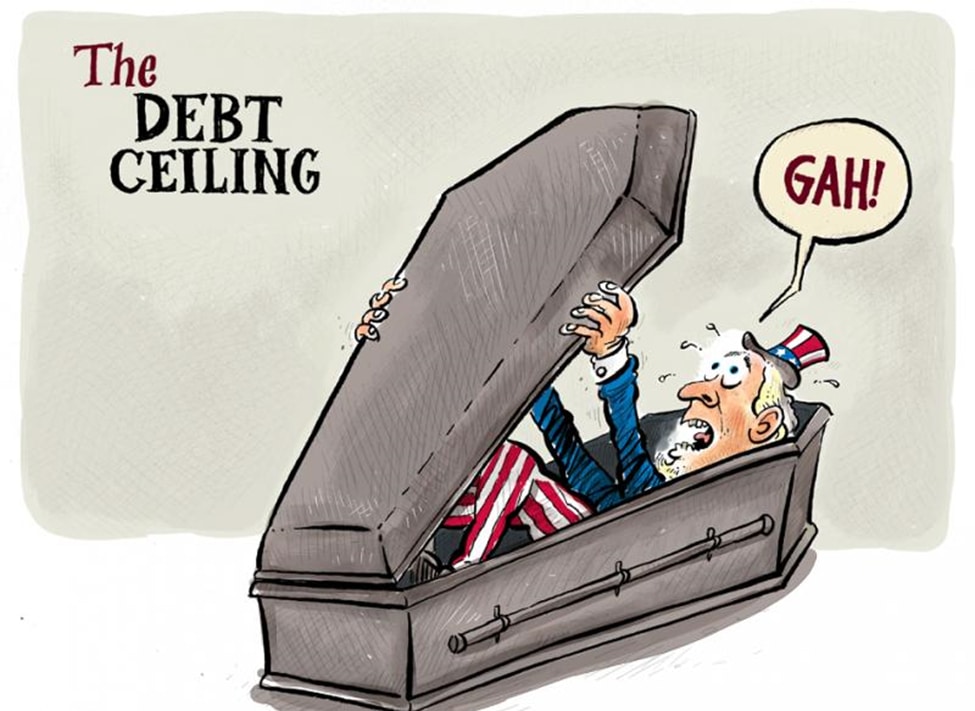The U.S. debt ceiling is a weighty dilemma for U.S. diplomats and politicians. The White House and Republicans in Congress are in a stand-off position over how much the government can borrow. The U.S. National treasury department is biting the bullet over the existing national debt. The debt ceiling refers to the legislative curb established as a limit.
If the National Treasury Department is required to spend more than the ceiling established as the maximum limit, Congress must vote to accept or suspend the plea. Economists express fear of the disastrous implications of the situation when Congress cannot reach an agreement over the ceiling. It is still nebulous how lawmakers are going to counter the existing situation.
What is a Debt Ceiling?
The debt ceiling is the limit cap of the total amount of money that the U.S. government can borrow to meet the government’s funding requirements and financial obligations. In 1917, a debt ceiling was established to limit expenditure. In January 2023, $31.4 trillion was the total national debt and debt ceiling estimate. Since 2001, the U.S. government has run a deficit of nearly $1 trillion, implying it has spent more than the received taxes and revenue. The difference must be covered by borrowing more than the already authorized amount.

Moreover, the action will not positively influence the nation’s financial commitments. This decision to spend further is separately legislated. Until both chambers of Congress agree to change the debt ceiling, making amends to the existing debt ceiling is impossible. The situation of indecision will not supposedly follow any fruitful outcomes.
The government won’t be able to issue new debts and pay its bills once it exhausts the funds. The government will eventually default on its debt if it cannot make the required payments to bondholders. It will be an economically devastating scenario and can bring the world to a phase of economic crisis. It will subsequently furlough the federal workers, and the global stock market will evidently crash.
Has There Been an Incident of Increased Debt Ceiling Before?
Government must raise or suspend the debt ceiling when it becomes necessary for the government to pay its debts. Some decades before, it was common for the government to raise the debt ceiling due to unforgiving circumstances. Since 1960, there have been 78 incidents when Congress increased the debt ceiling. The most recent was the year 2021. Both Republican and Democratic presidents have made this decision. Depending on the condition, it has forced the government made by either party to take this decision in favor of the nation and to avoid financial calamities. The government also suspended the plea to raise the debt ceiling. Congress has suspended the debt limit seven times since the year 2013.

The Effects of the US Defaulting on Its Debt
- The U.S could lose roughly 3 million jobs.
- People with a 401(K) account could lose between 15,000-20,000$ in savings as per some estimates.
- The cost to Mortgage a home would increase significantly.
- Borrowing in general would become much harder than it used to be.
- It would lead to a surge in inflation, which would defeat the Federal Reserve’s purpose of increasing interest rates to curb inflation.
- It could lead to a 15-20% destruction in the value of the dollar.
- Interest payments on total US Debt is close to cross 1 trillion dollars, which will be difficult to service for the country.
Latest updates
U.S President Joe Biden has recently spoken on the topic and has assured people that there they will find a solution and that the U.S wont default on its debt. U.S treasury head Janet Yellen has been voicing her concerns since the past few weeks on this topic as she says that a U.S default would be catastrophic for the country and would lead have disastrous effects on the global market. She has warned that the U.S just have a few weeks to raise the debt ceiling and with every day passing the risk of a U.S default increases. The US One-year CDS (Credit Default Swap) has already surpassed 2008 highs of 69 and is near 150 levels currently. A credit default swap is a financial swap agreement that the seller of the CDS will compensate the buyer in the event of a debt default or other credit event. That is, the seller of the CDS insures the buyer against some reference asset defaulting. The US One-year CDS generally trades in the range of 10-20, so if its currently trading near 150 you can understand the panic levels among U.S bond investors right now.
Conclusion
Raising the debt ceiling is a concern that requires voting from both panels of Congress. The prolonged delay in paying the debt may cause the loss of thousands of jobs nationwide. History suggests that Congress also finds a way to increase the debt ceiling and it could be a similar outcome this time as well. Even if they raise the debt ceiling, we could see many measures like cuts in expenditures to increase in tax rates by the U.S government to bring the total debt level under control. We should get more clarity on the matter within the next few weeks.






